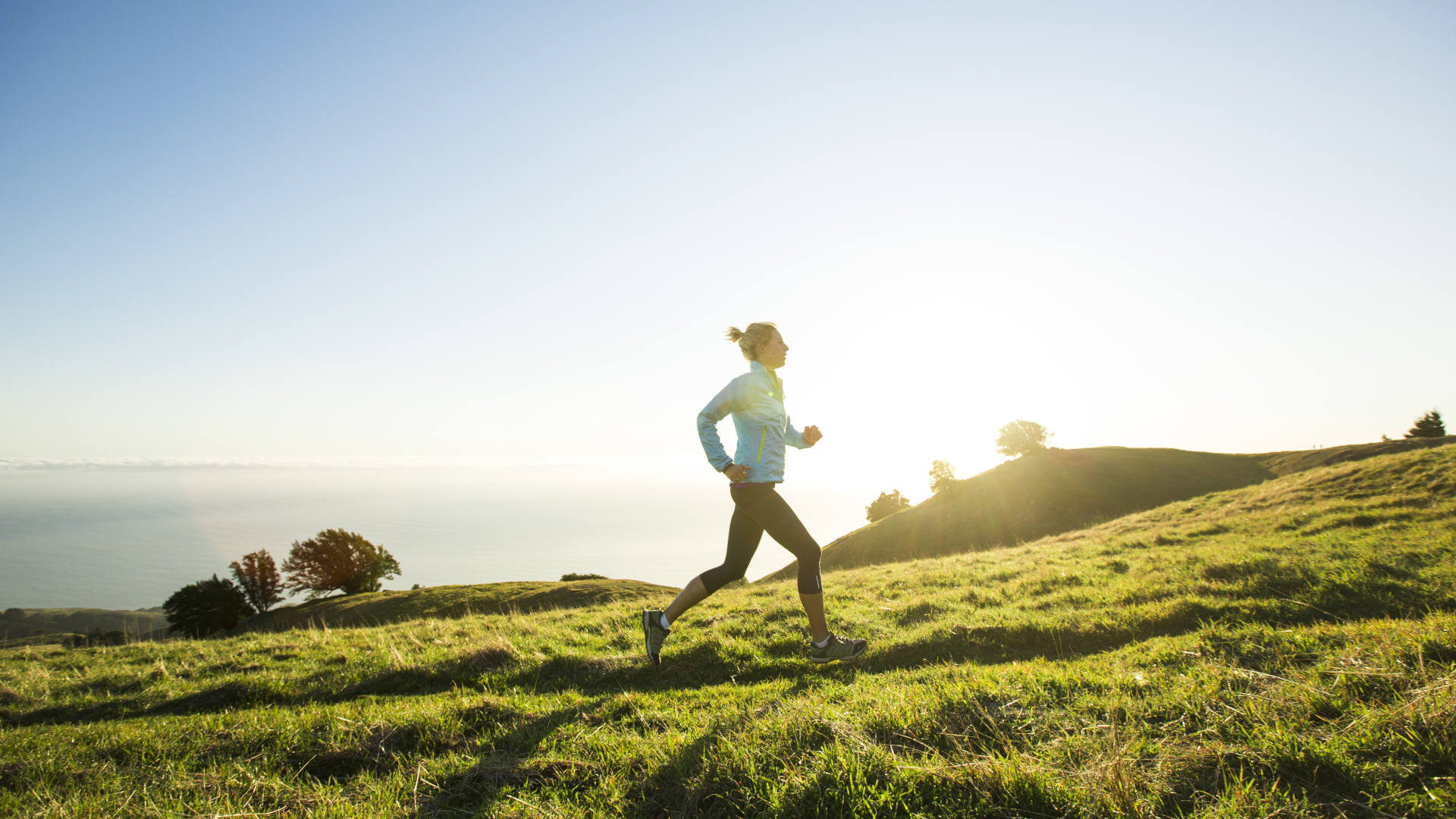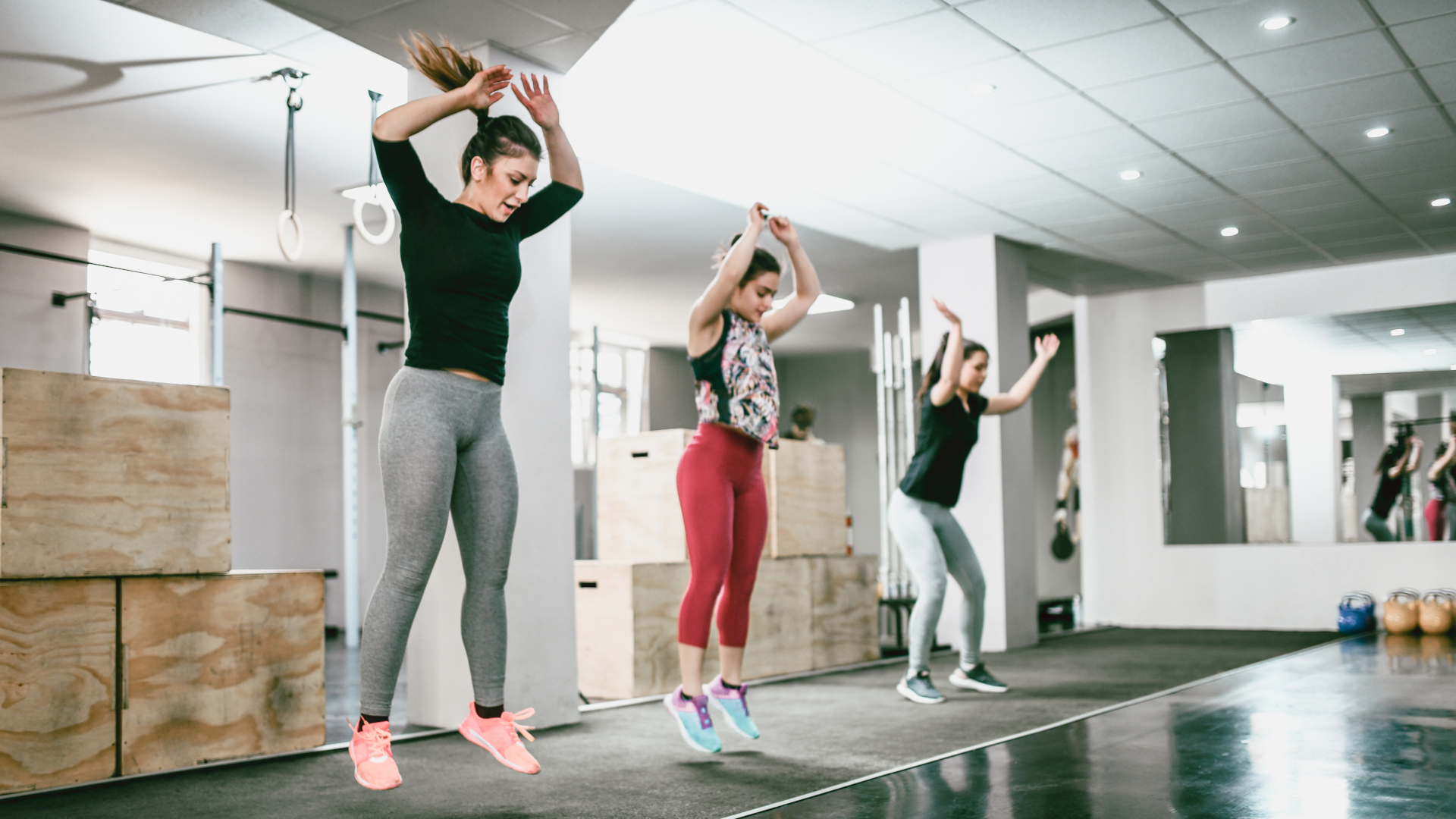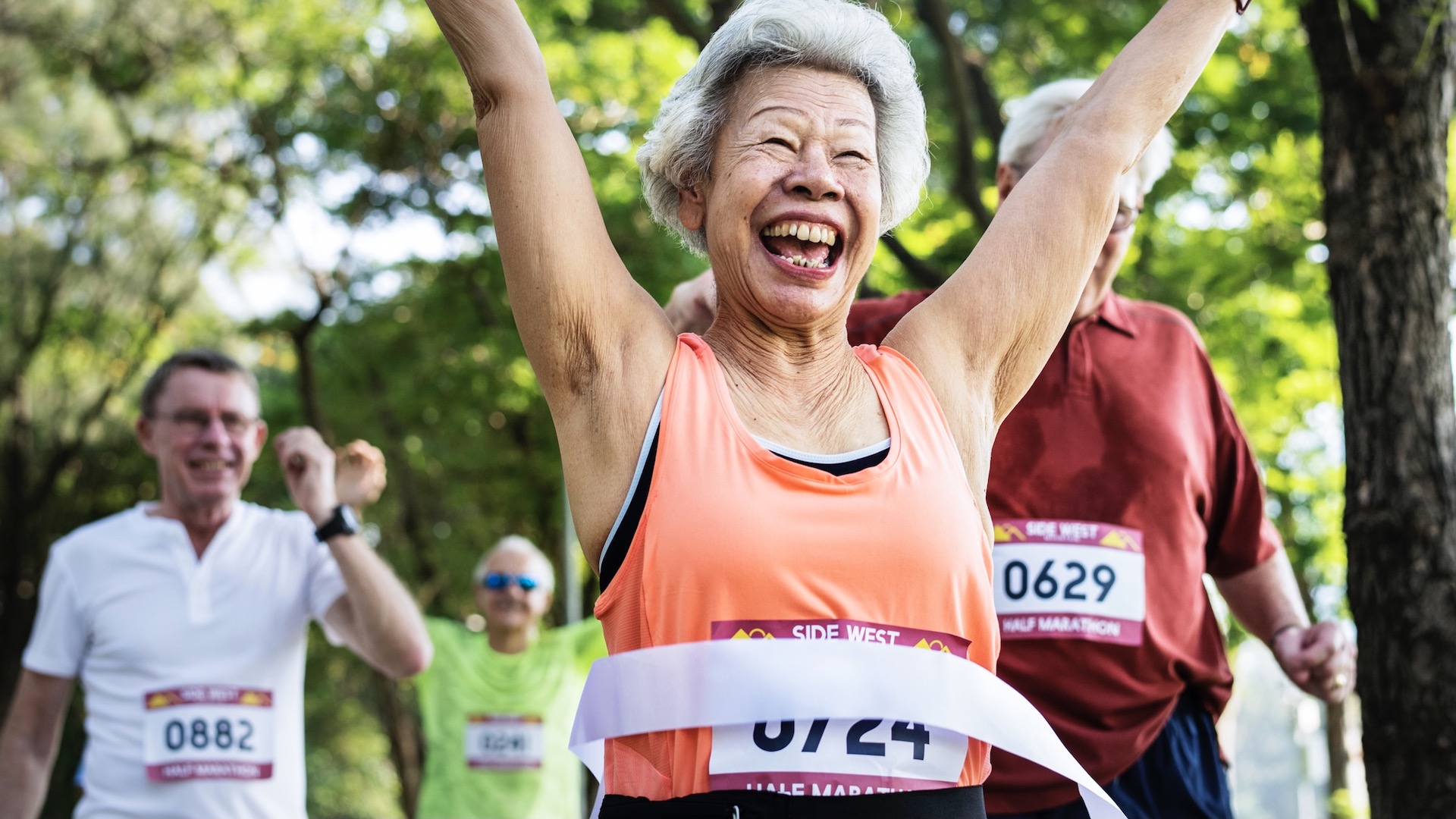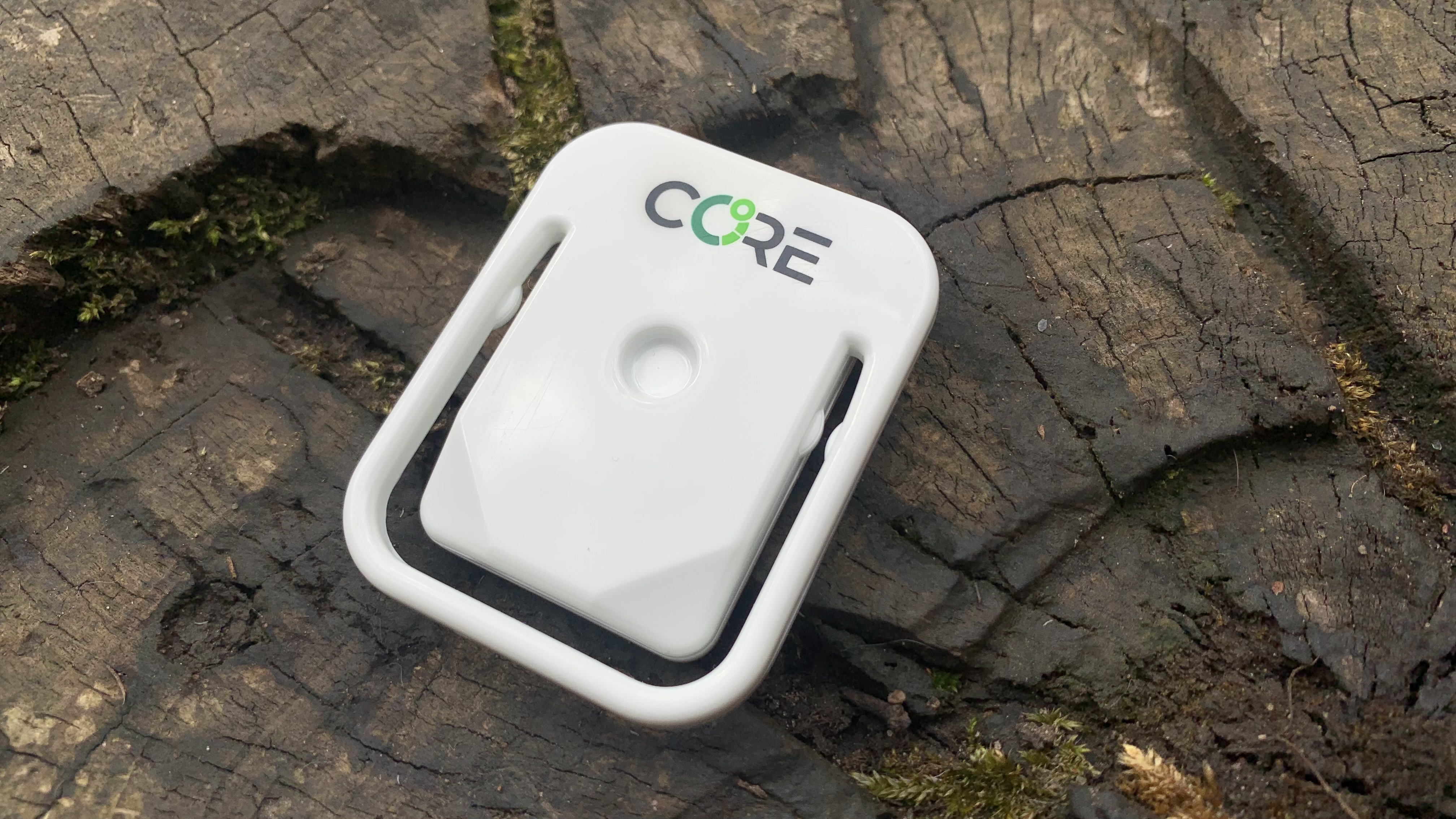What’s the story with running and bone density?
Some research says running improves bone density, while other studies suggest it depletes bone health, so we speak to a medical expert to get to the bottom of the matter

If you’re anything like me, you’ve been raised on the idea that lifting weights is important for women to maintain bone density as we age. And if you’re a lot like me, you’ve grimaced at the thought of getting in the gym when you could be out on the trail. But maintaining bone density is something that women especially need to pay attention to, with osteoporosis affecting almost 20% of women over 50 according to the CDC. So do I need to get a gym membership? Or does running help bone density?
In 2009, a study by researchers at the University of Missouri came to a groundbreaking conclusion for those of us that far prefer lacing up our trail running shoes to yanking on resistance bands: high-impact activities, such as running, might have a greater positive effect on bone mass density than resistance training. You're not lifting extra weight, but you are bearing your own weight, against gravity, while you do it.
Further, the study concluded that while resistance training is of benefit to those who do primarily non-weight-bearing activities, such as swimming and cycling, it only benefits the bones affected by the muscles you’re strengthening. As an example, if you swim regularly for cardiovascular exercise and do bicep curls in the gym for bone density, you’ll only improve the bone density of your humerus bone. But if you engage in high-impact, multi-directional activities like plyometrics, basketball, and even perhaps technical trail running, you’ll see more benefit, particularly to your spine and lower body.

I was thrilled! Dynamic, full body activities like running and hiking are my favorite, so I felt I was well off the hook when it came to kettlebells and bands. But another study ten years later published in the Journal of Exercise Rehabilitation found that while long distance running seems to have no harmful effect on bone properties, it does seem to increase bone formation markers, something which is often seen in conditions like osteoporosis.
So does running help or hinder bone density? I wanted to understand whether going on two or three 10k runs per week is detrimental to my bone health, and also whether I really need to finally start lifting weights, so I decided to consult Dr Zoe Watson on the issue. Watson is a London-based NHS GP and founder of Wellgood Wellbeing and she talks a lot of sense on such matters, as I learned when I was researching the potential health risks of ultrarunning.
“Essentially, exercise good – and probably, any kind of exercise is good – but definitely a bit of load bearing in there is best,” says Watson, pointing me to an article on osteoporosis in Up to Date, which recommends many different types of exercise, from resistance training to jogging, for at least 30 minutes three times a week to prevent bone density loss.

Load bearing exercise is simply any exercise where you’re working against gravity, so while it includes weight lifting and resistance band workouts, it also covers walking, dancing, playing tennis, and even yoga if you’re focusing on weight-bearing poses like standing postures and planks. So if, like me, you’re mixing up running with hiking, rock climbing and yoga, or perhaps some resistance training, you’re likely helping to maintain your bone health, even without the barbell.
Advnture Newsletter
All the latest inspiration, tips and guides to help you plan your next Advnture!
Bone density levels might not sound as sexy as, say, having a six pack, and unless you fall and break something, you’re not likely to notice the difference in your bone health. Where this all becomes really important, according to Watson, is once menopause hits. Here, she launches into an mini biology lesson to explain how bones are formed, and how they can be broken down.
There are three different types of cells which make up your skeleton:
- Osteoblasts: These guys make the bone.
- Osteocytes: These guys are 'mature' osteoblasts; they are the structural cells of the bone, which are surrounded by mineral matrix that make up the bone tissue (a process called osteogenesis).
- Osteoclasts: These guys resorb the old bone and make way for new, stronger bone.
“At a cellular level, the human skeleton is in a constant state of flux between new bone formation and old bone resorption,” explains Watson, and in pre-menopausal women, estrogen helps keep the bone laying down/resorption process in status quo. However, when estrogen drops during menopause, osteoclast activity increases (more bone is resorbed) and osteoblast activity reduces (less new bone being made) resulting in an imbalance between the two processes and eventual reduction in bone density. If unchecked, this eventually leads to osteoporosis, but exercise can help.
“It’s thought that exercise acts to suppress osteoclast activity and increase osteoblast activity, therefore helping to counteract the menopause effect,” Watson concludes.

Currently, the science seems to show that all exercise is good, so you don’t have to take up running to improve your bone density, but if you already do it, you don’t necessarily need to be afraid that it’s reducing your bone density. Do make sure you include regular bouts of load bearing activity if you’re focused on a non-load bearing sport (cyclists have been shown to have lower bone density than runners according to a 2018 study out of Norway) and that you’re ultimately including your whole body in your workouts. After all, if you only run, you’re not going to be doing much for the bone density of your arms and shoulders, so make sure you perfect that plank on your rest days.
Of course, the reason there has been some conflicting data on running and bone density over the years is because there are other factors that might affect your bone density, including genetics, your diet, and how far you’re running. A 1992 study in the Journal of Applied Physiology found that runners who exceeded 20 miles per week tended to see a reduction in bone density in their lower legs. So there may be a point in your training at which you’re seeing a deleterious effect. The medical advice would be to not overdo it on the trail, or on the road, and to follow these other recommendations for improving your bone density from Up to Date:
- Diet: An optimal diet for bone health involves making sure you get enough protein and calories, as well as plenty of calcium and vitamin D. Read more in our article on nutrition for running.
- Calcium: Experts recommend that premenopausal women and men consume at least 1,000mg of calcium per day.
- Vitamin D: Experts recommend that men over 70 and postmenopausal women consume 800 international units (20 micrograms) of vitamin D daily. Daily safe sun exposure is also recommended.
- Alcohol: Reduce your alcohol consumption; intake of more than two drinks per day is associated with higher risk of fracture. It can also impact your running performance, as we’ve previously written about in our article on alcohol and running.
Julia Clarke is a staff writer for Advnture.com and the author of the book Restorative Yoga for Beginners. She loves to explore mountains on foot, bike, skis and belay and then recover on the the yoga mat. Julia graduated with a degree in journalism in 2004 and spent eight years working as a radio presenter in Kansas City, Vermont, Boston and New York City before discovering the joys of the Rocky Mountains. She then detoured west to Colorado and enjoyed 11 years teaching yoga in Vail before returning to her hometown of Glasgow, Scotland in 2020 to focus on family and writing.

